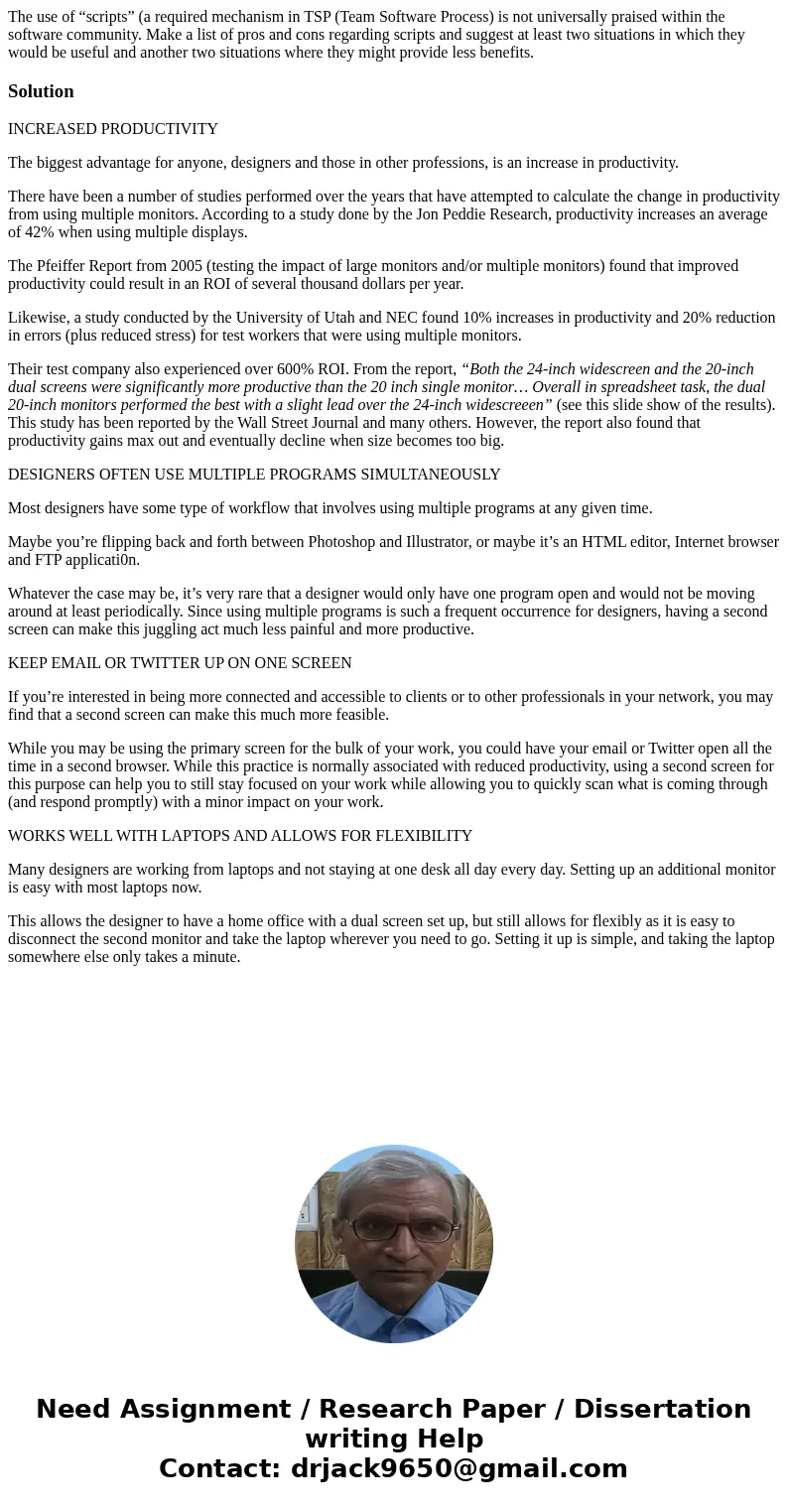The use of scripts a required mechanism in TSP Team Software
The use of “scripts” (a required mechanism in TSP (Team Software Process) is not universally praised within the software community. Make a list of pros and cons regarding scripts and suggest at least two situations in which they would be useful and another two situations where they might provide less benefits.
Solution
INCREASED PRODUCTIVITY
The biggest advantage for anyone, designers and those in other professions, is an increase in productivity.
There have been a number of studies performed over the years that have attempted to calculate the change in productivity from using multiple monitors. According to a study done by the Jon Peddie Research, productivity increases an average of 42% when using multiple displays.
The Pfeiffer Report from 2005 (testing the impact of large monitors and/or multiple monitors) found that improved productivity could result in an ROI of several thousand dollars per year.
Likewise, a study conducted by the University of Utah and NEC found 10% increases in productivity and 20% reduction in errors (plus reduced stress) for test workers that were using multiple monitors.
Their test company also experienced over 600% ROI. From the report, “Both the 24-inch widescreen and the 20-inch dual screens were significantly more productive than the 20 inch single monitor… Overall in spreadsheet task, the dual 20-inch monitors performed the best with a slight lead over the 24-inch widescreeen” (see this slide show of the results). This study has been reported by the Wall Street Journal and many others. However, the report also found that productivity gains max out and eventually decline when size becomes too big.
DESIGNERS OFTEN USE MULTIPLE PROGRAMS SIMULTANEOUSLY
Most designers have some type of workflow that involves using multiple programs at any given time.
Maybe you’re flipping back and forth between Photoshop and Illustrator, or maybe it’s an HTML editor, Internet browser and FTP applicati0n.
Whatever the case may be, it’s very rare that a designer would only have one program open and would not be moving around at least periodically. Since using multiple programs is such a frequent occurrence for designers, having a second screen can make this juggling act much less painful and more productive.
KEEP EMAIL OR TWITTER UP ON ONE SCREEN
If you’re interested in being more connected and accessible to clients or to other professionals in your network, you may find that a second screen can make this much more feasible.
While you may be using the primary screen for the bulk of your work, you could have your email or Twitter open all the time in a second browser. While this practice is normally associated with reduced productivity, using a second screen for this purpose can help you to still stay focused on your work while allowing you to quickly scan what is coming through (and respond promptly) with a minor impact on your work.
WORKS WELL WITH LAPTOPS AND ALLOWS FOR FLEXIBILITY
Many designers are working from laptops and not staying at one desk all day every day. Setting up an additional monitor is easy with most laptops now.
This allows the designer to have a home office with a dual screen set up, but still allows for flexibly as it is easy to disconnect the second monitor and take the laptop wherever you need to go. Setting it up is simple, and taking the laptop somewhere else only takes a minute.

 Homework Sourse
Homework Sourse